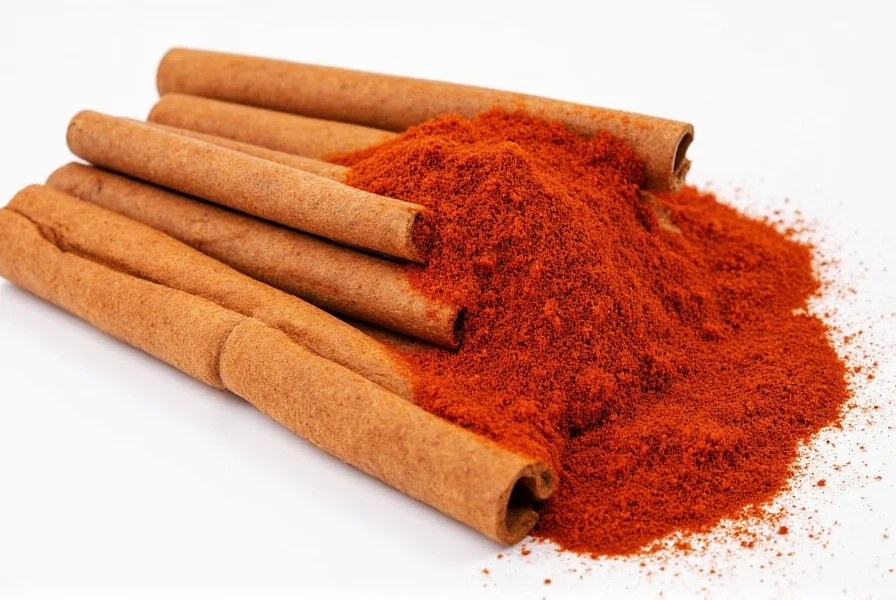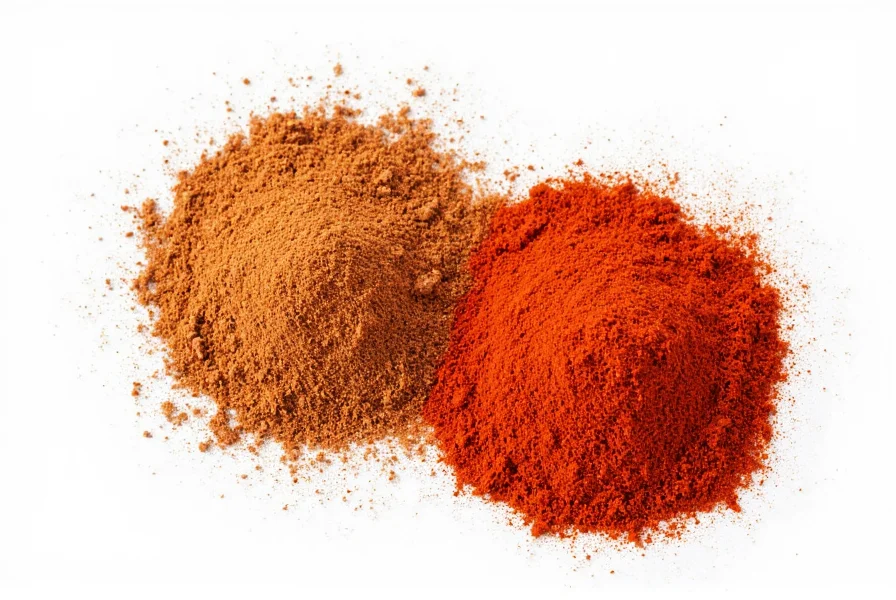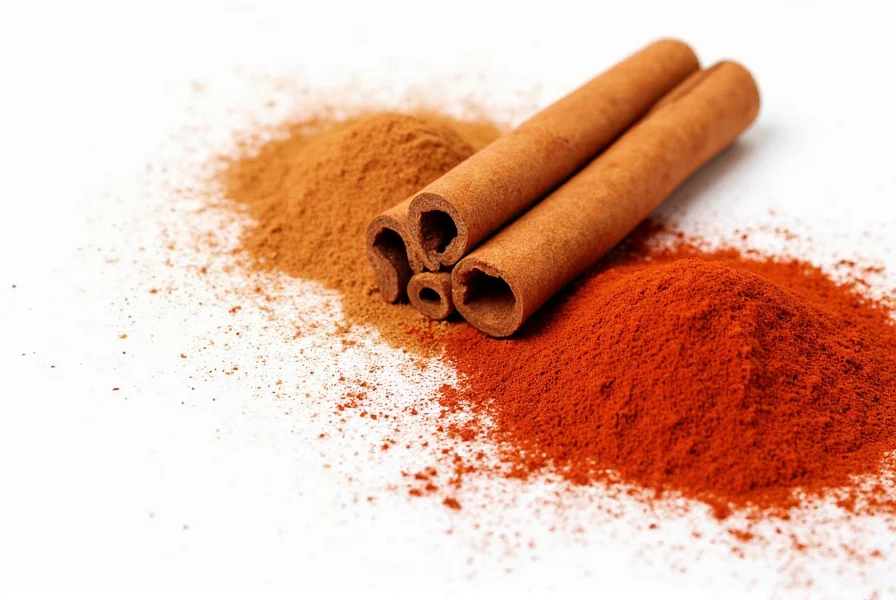When exploring the popular wellness question should cinnamon be mixed with cayenne, it's essential to separate evidence-based facts from trending health claims. Both spices have documented health properties individually, but their combined effects are often overstated in popular media. This comprehensive analysis examines the scientific evidence, practical applications, and important safety considerations for combining these two common kitchen spices.
Understanding Cinnamon and Cayenne Individually
Cinnamon and cayenne pepper each bring unique properties to the table. Cinnamon, particularly the Ceylon variety, contains cinnamaldehyde which gives it anti-inflammatory and antioxidant properties. Research suggests cinnamon may help with blood sugar regulation, though effects are modest and vary between individuals. Cayenne pepper contains capsaicin, the compound responsible for its heat, which has been studied for potential metabolic and pain-relief benefits.
When considering is it safe to mix cinnamon and cayenne pepper, the first step is understanding each component. Ceylon cinnamon is generally preferred over Cassia due to lower coumarin content, which can be problematic for liver health in large amounts. Cayenne's capsaicin content ranges from 0.1% to 1%, affecting both its heat level and potential physiological effects.
| Property | Cinnamon | Cayenne Pepper |
|---|---|---|
| Primary Active Compound | Cinnamaldehyde | Capsaicin |
| Typical Culinary Dose | 1/2 to 1 teaspoon | 1/8 to 1/4 teaspoon |
| Potential Health Benefits | Blood sugar regulation, antioxidant effects | Pain relief, temporary metabolism boost |
| Common Side Effects at High Doses | Mouth sores, liver concerns (Cassia) | Digestive upset, heartburn |
Scientific Evidence on Combining Cinnamon and Cayenne
The popular question does cinnamon and cayenne boost metabolism deserves careful examination. While both spices individually show some metabolic effects in studies, research specifically on their combination is extremely limited. A 2019 review in the Journal of Functional Foods noted that capsaicin may temporarily increase energy expenditure by about 50 calories per day, while cinnamon's effects on metabolism are less direct and primarily related to blood sugar management.
When evaluating cinnamon and cayenne health benefits together, it's important to recognize that most claims about synergistic effects lack robust clinical evidence. The theory that they work better together for weight loss or detoxification is largely anecdotal. A comprehensive analysis published in Nutrition Reviews concluded that while both spices have individual health properties, there's insufficient evidence to support enhanced effects when combined.

Practical Applications and Safety Considerations
For those wondering how to mix cinnamon and cayenne safely, the culinary approach is generally the safest. Many traditional cuisines naturally combine these spices in moderate amounts. A common ratio is 1 part cayenne to 4-8 parts cinnamon, depending on heat tolerance. This combination works well in:
- Spiced teas and warm beverages
- Marinades for meats
- Roasted vegetable seasonings
- Healthy dessert toppings
When preparing cinnamon cayenne tea benefits recipes, start with small amounts - 1/4 teaspoon of cinnamon and a pinch of cayenne in 8 ounces of warm water or tea. Gradually adjust to taste and tolerance. The combination creates a warming beverage that some find comforting during cold months, though claims about dramatic health improvements should be viewed skeptically.
Who Should Exercise Caution
While is it safe to mix cinnamon and cayenne pepper for most people in culinary amounts, certain individuals should be cautious:
- People with gastrointestinal conditions like ulcers, GERD, or IBS may experience aggravated symptoms
- Those taking blood thinners should monitor cinnamon intake due to potential interactions
- Individuals with liver conditions should prefer Ceylon cinnamon over Cassia
- Pregnant women should consult their healthcare provider before therapeutic use
The potential side effects of cinnamon and cayenne when combined primarily relate to digestive discomfort. Some people experience heartburn, stomach upset, or mouth irritation, especially when consuming larger amounts than typically used in cooking. If you're exploring this combination for specific health concerns, discuss it with your healthcare provider first.

Realistic Expectations for This Spice Combination
Despite popular claims about cinnamon cayenne combination for weight loss, scientific evidence doesn't support dramatic results. Any metabolic boost from this combination would be minimal and temporary. A systematic review in the International Journal of Obesity found that capsaicin might increase calorie burn by approximately 50 calories daily - equivalent to a small apple. Cinnamon's effects on blood sugar might help with appetite regulation for some individuals, but results vary significantly.
The most realistic benefits of mixing these spices come from their culinary applications and potential to replace less healthy flavorings. Using this combination in place of sugar or salt in recipes can support healthier eating patterns, which may contribute to better overall health when part of a balanced diet and lifestyle.
Does mixing cinnamon and cayenne provide significant health benefits?
While both spices have individual health properties, scientific evidence for significant synergistic benefits when combined is limited. The combination may offer modest antioxidant effects and could potentially support healthy eating habits by enhancing flavor without added sugar or salt, but dramatic health improvements are not supported by current research.
What's the recommended ratio for mixing cinnamon and cayenne?
For culinary use, a safe starting ratio is 4-8 parts cinnamon to 1 part cayenne. For example, begin with 1/2 teaspoon cinnamon and 1/8 teaspoon cayenne in recipes or beverages. Adjust gradually based on your heat tolerance, as cayenne can be quite potent even in small amounts.
Can cinnamon and cayenne help with weight loss?
Research shows minimal metabolic effects from this combination. Capsaicin may temporarily increase calorie expenditure by about 50 calories per day, while cinnamon may help with blood sugar regulation. Any weight loss benefits would be modest and should be viewed as complementary to, not a replacement for, a balanced diet and regular exercise.
Are there any medication interactions to consider?
Yes, cinnamon may interact with blood thinners due to coumarin content (especially Cassia cinnamon), and both spices might affect blood sugar levels. If you take medications for diabetes, blood pressure, or blood thinning, consult your healthcare provider before using this combination in therapeutic amounts beyond normal culinary use.
Which type of cinnamon is best to use with cayenne?
Ceylon cinnamon is generally preferred over Cassia cinnamon when combining with cayenne. Ceylon contains significantly less coumarin, a compound that can cause liver issues in high amounts. While both types work in recipes, Ceylon offers the same flavor benefits with a better safety profile for regular consumption.











 浙公网安备
33010002000092号
浙公网安备
33010002000092号 浙B2-20120091-4
浙B2-20120091-4